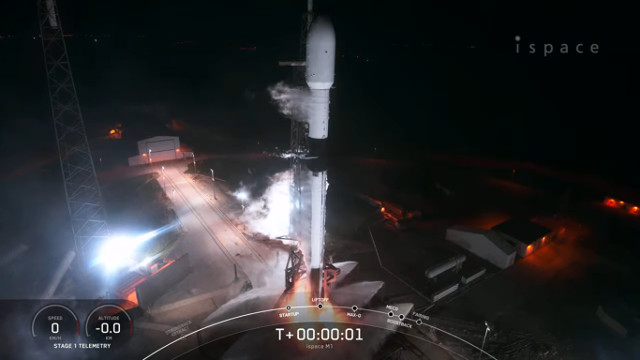
A little while ago, ispace’s Hakuto-R Moon lander and NASA’s CubeSat-class nanosatellite Lunar Flashlight blasted off atop a Falcon 9 rocket from Cape Canaveral. After about 46 minutes, Hakuto-R successfully separated from the rocket’s last stage, and about 7 minutes later, Lunar Flashlight separated as well. Hakuto-R also carries two small rovers built by the United Arab Emirates and Japan. The route of what is called Hakuto-R Mission 1 will take about five months to get the lander to the Moon, where it will attempt a landing while the nanosatellite Lunar Flashlight will enter lunar orbit in about four months in search of water ice on its surface.
In recent years, ispace was one of the companies that participated in the Google Lunar X PRIZE, which ended without a winner. Despite that, the development of its own lander continued up to the current Hakuto-R. The aim is to seek water and other resources on behalf of private companies and agencies that will need them to carry out plans to build bases on the Moon.
The ispace programs now see what they called Hakuto-R Mission 1 as a test to then proceed to subsequent missions which may also include the transport of payloads on behalf of third parties, agencies, or other private companies. In this mission, the payloads are two small rovers. In essence, ispace intends to be at the forefront of what could be a new market linked to new Moon programs, starting with NASA’s.
NASA doesn’t run this mission but added a secondary payload to the launch with the Lunar Flashlight satellite. According to the original plans, it was to be launched with the Artemis 1 mission but delays in preparation led to this solution. Lunar Flashlight is formed by 6 cubic units of the type used in the CubeSat class and has the purpose of testing some technologies for the search for water ice with a cheap system such as the CubeSat class satellites with a near-infrared laser reflectometer for the surveys. Its small thrusters use a new type of propellant that offers greater safety than hydrazine, which is toxic.
The launch of the Hakuto-R lander and the Lunar Flashlight nanosatellite went well and the two vehicles are en route to the Moon. Their missions are complex for various reasons because, in the coming months, they will have to carry out various maneuvers to get to the Moon landing of Hakuto-R and the insertion into orbit of the Lunar Flashlight.


